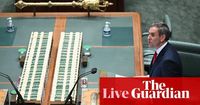The Australian government has unveiled its 2025-26 federal budget, focusing on cost-of-living relief, tax cuts, and support for households, students, and businesses. With a general election approaching, Australia’s treasurer Jim Chalmers introduced several measures aimed at easing financial pressure on Australians while addressing key economic challenges, including housing affordability and slowing economic growth, reported Bloomberg.
One of the most significant highlights is the extension of tax cuts, which will reduce the tax rate for those earning between A$18,201 and A$45,000 to 14% by July 2027. According to Bloomberg, these cuts will result in an average tax saving of A$2,548 by the 2027-28 financial year.
Households and small businesses will also receive automatic energy bill relief, with A$150 deducted from their power bills in quarterly instalments starting in July. This initiative is part of a broader A$1.8 billion package to help Australians cope with rising electricity costs, reported The Sydney Morning Herald.
The government has pledged an A$8.5 billion investment in Medicare, expanding bulk-billed health services to reduce out-of-pocket expenses for patients. Additionally, A$689 million has been allocated to lower the cost of medicines under the Pharmaceutical Benefits Scheme, with the maximum cost of many medications dropping from A$31.60 to A$25.
Student debt relief is another major policy announcement, with the government planning to wipe out 20% of student debt, benefiting over three million Australians. The move, combined with revised repayment thresholds, will cut an average of A$5,400 per student from outstanding loans, amounting to A$19 billion in total debt relief, according to The Sydney Morning Herald.
Housing affordability remains a critical issue, yet the budget offers only limited solutions. The government announced an A$54 million investment in modular and prefabricated home construction to speed up development. The Help to Buy shared equity scheme has also been expanded from A$5.5 billion to A$6.3 billion, allowing more Australians to enter the housing market with lower deposits.
For infrastructure, major investments include A$7.2 billion for Queensland’s Bruce Highway, A$1 billion for Sydney’s Southwest Rail Link, and A$2 billion for Melbourne’s airport rail station upgrades.
Despite these initiatives, the budget is projected to return to an A$27.6 billion deficit in 2024-25, deepening to A$42.1 billion in 2025-26. While economic growth is expected to improve slightly, inflation remains a key concern, with the Reserve Bank of Australia carefully monitoring public spending.
Defence spending has also drawn attention, with no major new commitments beyond a slow increase to 2.3% of GDP by the early 2030s. This falls short of the 3% defence spending target encouraged by US President Donald Trump, potentially straining Australia’s relations with the United States, as per Bloomberg.
In reactions to the budget, the Australian Council of Trade Unions (ACTU) welcomed the tax cuts and saw the removal of non-compete clauses as a positive step that supports wage growth. ACTU President Michele O’Neil proclaimed, "Real wages are going up under the Albanese government and this budget shows there is even stronger real wages growth on the way." Conversely, Senators have voiced their discontent with the budget. Senator Jacqui Lambie criticized the tax cuts, arguing that they are not being targeted effectively, stating, "Giving rich people more tax cuts is not a viable option." Greens leader Adam Bandt described the tax measures as a "tiny tax tweak," adding that the 73 cents daily benefit in the first year is negligible given the current economic strains households face.
Economic analysts also expressed skepticism regarding the government’s commitments. ACOSS Chief Executive Cassandra Goldie stated, "We need a budget that sets us up for the future," citing a lack of proposals aimed at alleviating poverty amidst the rising cost of living.
Chalmers, while presenting the budget, emphasized its necessity in the context of global economic volatility: "This is a responsible budget that prioritizes the needs of the Australian people during these uncertain times." He noted the government's commitment to delivering effective fiscal management while responding to pressing social issues.
The 2025-26 budget showcases a balancing act for the Albanese government. While it aims to provide immediate relief for families facing economic hardships and presents a vision for enhanced public services, it must also address the skepticism of various stakeholders regarding its long-term fiscal viability and social impact.
As Australia moves closer to the elections, these budgetary decisions will undoubtedly shape public perception and voter sentiment. With tax cuts and significant social investments at the forefront, the Albanese government’s upcoming challenge will be to communicate the effectiveness of its policies while mitigating concerns over fiscal sustainability and social equity.






